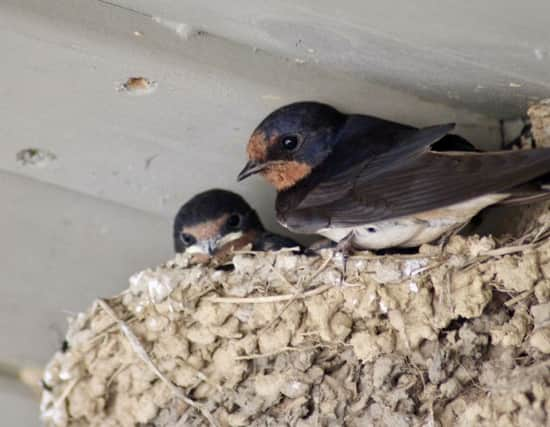Appeal for householders to help save Scotland’s fastest bird


The iconic summer visitors used to be seen in large numbers swooping across the rooftops in Scotland’s urban areas.
Nicknamed devil birds because of their distinctive screams, swifts can reach speeds of up to 70 miles per hour in flight.
Advertisement
Hide AdAdvertisement
Hide AdBut the bird is also one of Scotland’s fastest declining, with the population crashing by 59 per cent since 1995.
Now, as swifts prepare to make their epic 6,000 mile journey back to Scotland to bring up their chicks in the coming months, RSPB Scotland says some birds hoping to lay their eggs here will be thwarted because their former homes under the eaves are gone, as are the spaces once left for them.
The charity yesterday appealed to people in towns and cities to help the species by providing as many new homes for them as possible.
They say The British Trust for Ornithology (BTO)’s National Nestbox week, which runs from yesterday until 21 February, is the perfect time to install bird boxes for swifts to breed. RSPB Scotland’s senior species policy officer Keith Morton said: “We would love people to get involved in encouraging swifts back into our towns and cities by helping them to find homes.
“With just a small change to buildings and developments across Scotland we could provide many new homes for swifts.”
Swifts are incredible birds, spending most of their lives on the wing and only landing when it’s time to nest.
After flying its nest for the first time, a young swift may spend two or three years in the air, eating, drinking, sleeping, bathing and even mating on the wing.
The swifts that nest in Scotland arrive in late April and May, and may spend just three months in Scotland, soaring and swooping over rooftops catching insects to eat.
Advertisement
Hide AdAdvertisement
Hide AdThe birds breed in manmade structures and prefer old, tall buildings like churches and cathedrals with cavities as well as old houses and blocks of flats where they can nest at their preferred height above five metres.
Their loyalty to nesting sites is a critical factor as they have suffered from a reduction in sites due to building conversions and renovations in recent years.
Modern buildings lack the nooks and crannies swifts need.
Declines in Scotland seem to be even steeper than in the rest of the UK.
The Breeding Bird Survey 2017 reported that across the UK the population decline was 53 per cent since 1995, while in Scotland the decline was 59 per cent in the same time period.